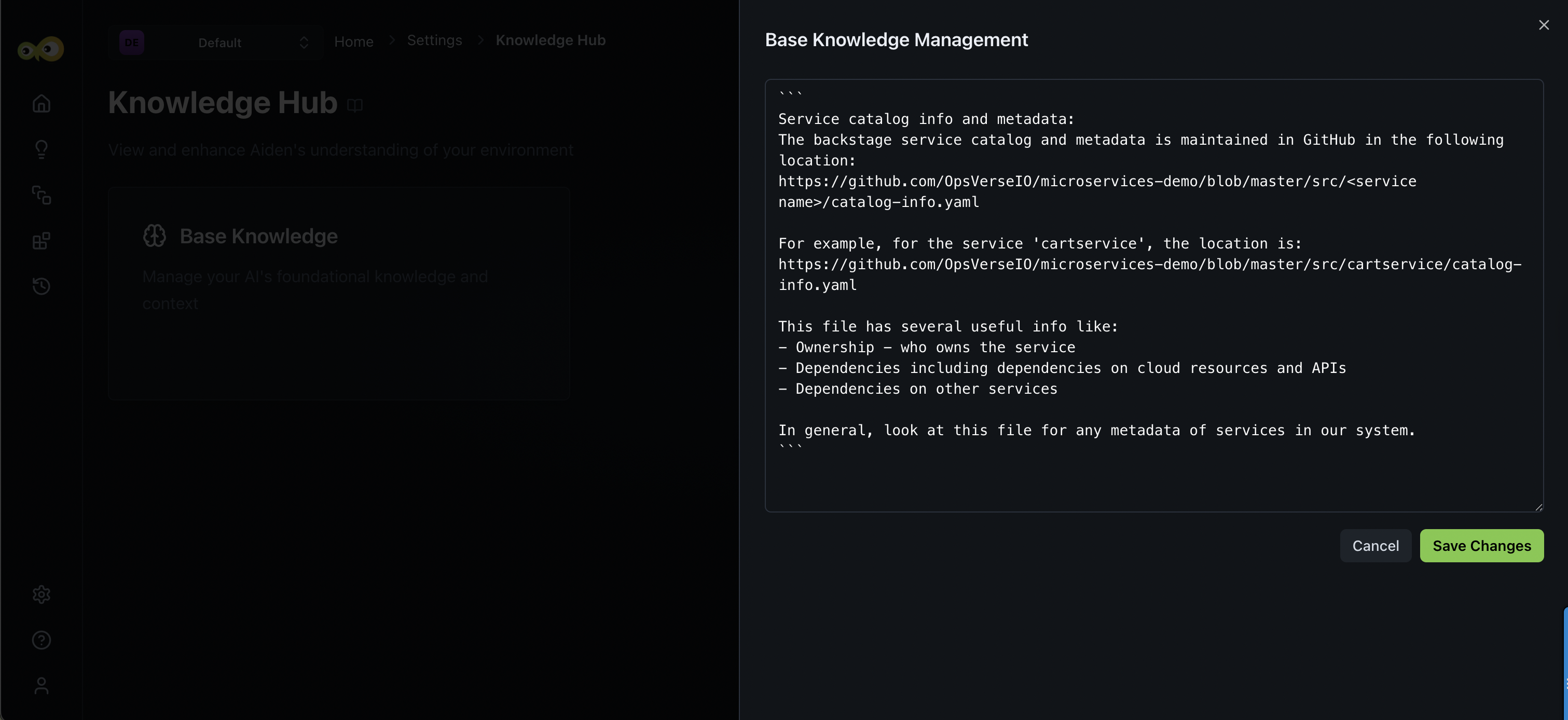Knowledge Hub
Knowledge Bases enable Aiden to understand your unique infrastructure, processes, and organizational practices. Think of it as onboarding Aiden to your team by sharing crucial context about how things work in your environment. You can define the Base Knowledge in StackGen Aiden via the Knowledge Hub.
Augmenting Integrations
Knowledge Bases significantly enhance Aiden's ability to work with your integrated tools by providing essential context about your setup. For example:
- We use the label
envin our Prometheus metrics to denote the environment (prod/staging/dev). - Our AWS resources follow the naming convention:
{team}-{env}-{service}. - All production databases have tags:
environment=prod,backup=daily.
This context helps Aiden formulate more precise queries and actions when working with your integrated systems.
In the near future, Aiden will automatically build Knowledge Bases by analyzing your integrated tools and systems. This automated discovery will work alongside your manually provided information to create a comprehensive understanding of your environment. For instance, Aiden will be able to:
- Discover common patterns in your cloud resource tags.
- Learn about your monitoring label schemas.
- Understand your deployment patterns.
- Map service dependencies.
Writing Effective Knowledge Bases
Write your Knowledge Bases as if you're explaining your setup to a new senior DevOps engineer. For example:
We use a centralized ArgoCD instance for all our deployments. Applications are segregated using ArgoCD projects, with each team having their own project. All production deployments require approval from two team leads.
Some key areas to document:
- Deployment workflows and practices.
- Infrastructure architecture and patterns.
- Security policies and compliance requirements.
- Development environments and configurations.
- Release processes and gates.
- Incident response procedures.
Knowledge Base Best Practices
- Keep it Natural: Write in plain language. You do not have to use any special formatting or structures.
- Be Specific: Include details that make your setup unique,
- Include Context: Add explanations for why certain choices were made.
- Document Exceptions: Note any special cases or variations in your processes.
Getting Started
Start with documenting your most frequently used processes and your tool-specific configurations. This helps Aiden immediately provide more accurate assistance, especially when working with your integrated systems.
Follow these steps to configure Base Knowledge via Knowledge Hub:
-
From the StackGen Home page, navigate to Settings > Knowledge Hub > click Manage on the Base Knowledge card.
-
Enter the base knowledge in the text area.

-
Click Save once done.